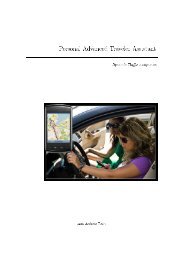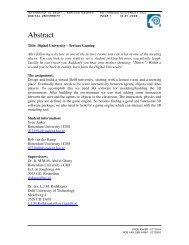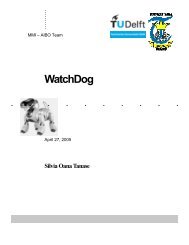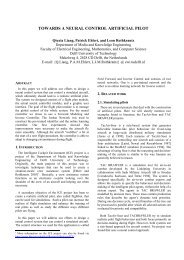Recognition of facial expressions - Knowledge Based Systems ...
Recognition of facial expressions - Knowledge Based Systems ...
Recognition of facial expressions - Knowledge Based Systems ...
Create successful ePaper yourself
Turn your PDF publications into a flip-book with our unique Google optimized e-Paper software.
Equation 18<br />
z<br />
x&<br />
x&<br />
x&<br />
1<br />
2<br />
3<br />
0 1 0<br />
= 0 0 1<br />
0 0 − β<br />
2<br />
= [ 2σ<br />
β 0 0]<br />
x<br />
x<br />
x<br />
x<br />
x<br />
x<br />
1<br />
2<br />
3<br />
1<br />
2<br />
3<br />
+<br />
0<br />
0<br />
1<br />
u(<br />
t)<br />
In the model we use, the state vector contains an additional state variable according to the<br />
Gauss-Markov process. u(t) is a unity Gaussian white noise. The discrete form <strong>of</strong> the<br />
f t<br />
model for tracking the eyes in the sequence is given in Equation 17. φ = e ∆ , w are the<br />
process Gaussian white noise and ν is the measurement Gaussian white noise.<br />
Equation 19<br />
x<br />
z<br />
k<br />
k<br />
= φ + w<br />
k<br />
= H<br />
k<br />
⋅ x<br />
k<br />
k<br />
+ v<br />
k<br />
The Kalman filter method used for tracking the eyes presents a high efficiency by<br />
reducing the error <strong>of</strong> the coordinate estimation task. In addition to that, the process does<br />
not require a high processor load and a real time implementation was possible.<br />
- 57 -
















